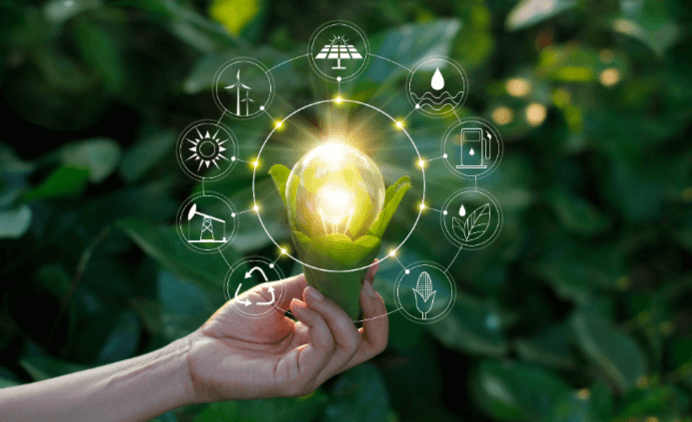What are the latest developments in sustainable technology and how are they helping to combat climate change?

Introduction
Climate change is one of the most pressing issues of our time, demanding immediate and effective action. The rise of sustainable technology offers promising solutions to reduce greenhouse gas emissions, enhance energy efficiency, and promote environmental conservation. This article delves into the latest advancements in sustainable technology and examines how these innovations are helping to combat climate change.
Advancements in Renewable Energy Sources
Renewable energy sources have seen significant advancements, making them more efficient, affordable, and accessible. Solar, wind, and hydroelectric power have become cornerstone technologies in the transition to a sustainable energy future.
Solar Power Innovations
Solar power has made tremendous strides with the development of more efficient photovoltaic cells and solar panels. Innovations such as bifacial solar panels, which capture sunlight on both sides, and the use of perovskite materials, which offer higher efficiency at a lower cost, are revolutionizing the solar industry.
Wind Energy Breakthroughs
Wind energy technology has also advanced with the creation of larger, more efficient wind turbines. Offshore wind farms are gaining popularity due to their ability to harness stronger and more consistent winds. Floating wind turbines, which can be deployed in deeper waters, are expanding the potential for wind energy production.
Hydroelectric Power Enhancements
Hydroelectric power remains a significant source of renewable energy. Recent developments in small-scale hydro and pumped-storage hydroelectricity are making it possible to store excess energy and provide a reliable power supply, even when weather conditions are unfavorable for solar and wind energy generation.
Energy Storage Solutions
Energy storage is critical for the reliable use of renewable energy. New technologies in battery storage and other methods are enhancing the ability to store and distribute energy efficiently.
Lithium-Ion Battery Improvements
Lithium-ion batteries are becoming more efficient and affordable, playing a crucial role in storing energy from renewable sources. Advances in battery technology, such as solid-state batteries, offer higher energy density, longer lifespans, and enhanced safety.
Alternative Energy Storage Methods
Beyond batteries, alternative energy storage methods like pumped hydro storage, compressed air energy storage, and flywheel energy storage are being developed and implemented. These technologies offer diverse options for storing large amounts of energy and balancing supply and demand.
Smart Grid Technologies
Smart grids are modernizing the way electricity is distributed and consumed. By integrating digital technology and advanced analytics, smart grids enhance the efficiency, reliability, and sustainability of the power grid.
Demand Response Systems
Demand response systems adjust power consumption based on supply availability, helping to balance the grid and reduce peak demand. These systems use real-time data and automated controls to manage energy usage dynamically.
Distributed Energy Resources
Distributed energy resources (DERs), such as rooftop solar panels, small wind turbines, and home battery storage systems, are becoming more prevalent. Smart grids facilitate the integration of DERs, allowing consumers to produce, store, and use their own energy while contributing to the overall grid stability.
Sustainable Transportation Innovations
The transportation sector is a significant contributor to greenhouse gas emissions. Innovations in sustainable transportation are crucial for reducing these emissions and promoting cleaner, more efficient travel.
Electric Vehicles (EVs)
Electric vehicles (EVs) are gaining popularity as an eco-friendly alternative to traditional internal combustion engine vehicles. Advances in battery technology, increased range, and expanding charging infrastructure are making EVs more accessible and practical for everyday use.
Hydrogen Fuel Cell Vehicles
Hydrogen fuel cell vehicles offer another promising solution for sustainable transportation. These vehicles use hydrogen to produce electricity, emitting only water vapor as a byproduct. With improvements in hydrogen production and storage, fuel cell vehicles are becoming more viable for widespread adoption.
Public Transportation Enhancements
Public transportation systems are also evolving to become more sustainable. Electric buses, light rail, and other forms of green public transit are reducing emissions and promoting cleaner urban environments.
Green Building Technologies
Green building technologies are transforming the construction industry by emphasizing energy efficiency, sustainable materials, and environmentally friendly practices.
Energy-Efficient Building Materials
Innovative building materials, such as insulated concrete forms, cross-laminated timber, and high-performance windows, are enhancing the energy efficiency of buildings. These materials reduce the need for heating and cooling, lowering overall energy consumption.
Smart Building Systems
Smart building systems use sensors, automation, and data analytics to optimize energy usage. These systems can control lighting, heating, ventilation, and air conditioning based on occupancy and environmental conditions, significantly reducing energy waste.
Sustainable Urban Planning
Urban planning is incorporating sustainability principles to create greener, more livable cities. Strategies like green roofs, urban forests, and sustainable drainage systems are improving air quality, reducing heat island effects, and managing stormwater.
Waste Management Innovations
Effective waste management is essential for reducing the environmental impact of human activities. New technologies are improving the way we manage waste, recycle materials, and reduce pollution.
Advanced Recycling Technologies
Advanced recycling technologies are making it possible to recycle more types of materials and reduce the amount of waste sent to landfills. Chemical recycling, for example, can break down plastics into their original components, allowing them to be reused indefinitely.
Waste-to-Energy Solutions
Waste-to-energy solutions convert waste materials into usable energy through processes like anaerobic digestion and gasification. These technologies reduce the volume of waste while generating renewable energy and valuable byproducts like biogas and biochar.
Circular Economy Practices
The circular economy emphasizes reducing, reusing, and recycling materials to create a closed-loop system. By designing products for longevity and recyclability, companies can minimize waste and reduce the need for new raw materials.
Agricultural Innovations
Sustainable agriculture is vital for feeding a growing population while minimizing environmental impact. Technological advancements are helping farmers adopt more sustainable practices and improve food production.
Precision Agriculture
Precision agriculture uses data and technology to optimize farming practices. Sensors, drones, and satellite imagery provide real-time information on soil conditions, crop health, and weather patterns, enabling farmers to make more informed decisions and reduce resource usage.
Vertical Farming
Vertical farming is an innovative method of growing crops in vertically stacked layers, often in controlled indoor environments. This technique uses less land and water than traditional farming and can produce food year-round, reducing the need for transportation and associated emissions.
FAQs
What is the most significant recent advancement in solar power technology? Recent advancements in solar power technology include the development of bifacial solar panels and the use of perovskite materials, both of which offer higher efficiency and lower costs compared to traditional solar panels.
How do smart grids contribute to sustainability? Smart grids enhance sustainability by improving the efficiency, reliability, and resilience of the power grid. They integrate renewable energy sources, facilitate demand response, and support distributed energy resources, reducing overall energy consumption and emissions.





